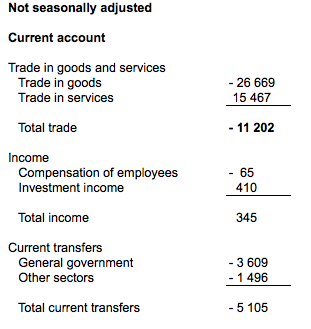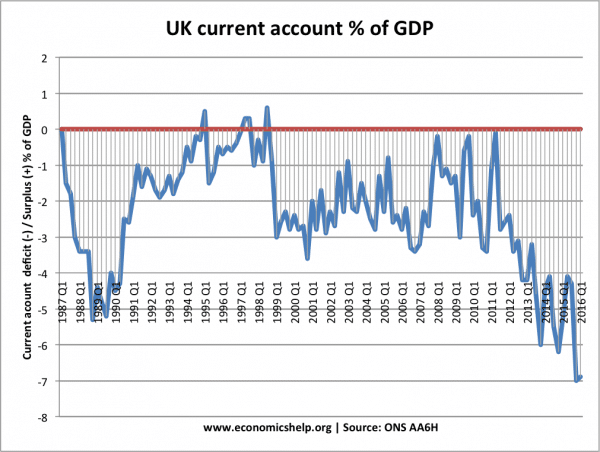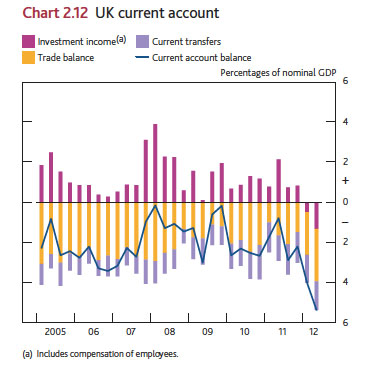Definition trade balance:
- The balance of trade measures the net exports of goods and services (NX).
- It is the value of exports – the value of imports.
- It forms the major component of the current account, although it ignores international investment flows and current transfers.
- The balance of trade refers to both trade in goods (visibles) and services (Invisibles) – Though people may refer to a specific balance of trade in goods.
Example of UK trade balance

2012 Q3. The balance of trade in goods and services was – £11,660m
UK Current account

This shows the UK current account balance. The major component of the current account is the trade balance – trade in goods.

This shows the different components of the UK current account. The trade balance is often counter-balanced by investment incomes.
Balance of Trade deficit
If the value of imports is greater than the value of exports we say a country has a trade deficit. This can occur for various reasons such as:
- Falling comparative advantage in manufactured goods
- Overvalued exchange rate – causing exports to be more expensive and imports cheaper
- High levels of consumer spending and low savings ratio – which encourages import spending relative to exports.
- In recessions, the balance of trade tends to improve as consumer spending falls and demand for imports goes down.
Related
